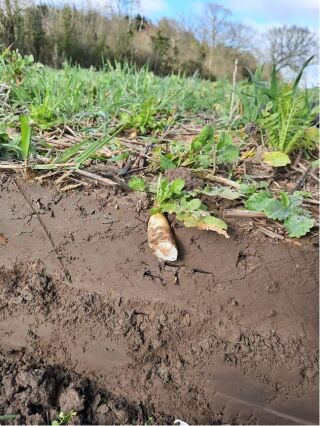R S Cockerill on the Regen Journey

Regenerative farming was the focus of the agenda at the R S Cockerill Growers Conference on Thursday 11th May at Sandburn Hall, near York. A date by which the planter would usually be back in the shed, but there was plenty of interest and engagement in such a thought-provoking subject. It’s firmly the direction of travel as we delve further into the environmental and economic challenges in potato production going forward. Livestock integration, cover cropping, min-til, all phrases amongst many that come to mind when the Regen word gets mentioned. We wanted to bust a few myths.
To the uninitiated the resource intensity of potatoes doesn’t easily lend itself to regenerative production, and that’s before you consider that many crops are grown on rented land. Many are already on the regenerative journey, but this was an opportunity to educate and support our grower base. We asked some of the country’s subject experts to define regenerative farming for us, and the steps they’d take to get us further down the road on our regenerative farming journey.
Although first of all, the discussion revolved around one of the more vintage tools in the depleted sprout suppressant armoury. Geoff Hailstone at UPL reminding our growers base how to get the best from Maleic Hydrazide? It’s still an important tool in storing processing potatoes.
Cover crops are possibly the poster child for regenerative farming. It’s important to understand exactly which soil borne pests and diseases you are trying to target, then prescribe the right catch and cover crops to match the specific issue, so says Clive Wood from Kings Crops. Legislation and access to support is changing, and there is much that we can do for effective bio fumigation and soil improvement.
Following on the tail of cover cropping was soil guru Philip Wright from Wright Resolutions defining his understanding of regenerative farming. Highlighting some of the simple practices that could be implemented to reduce tillage, certainly on lighter soils like ours in the Vale of York, combined with optimal cover crop management. Phil discussed how reducing tillage intensity drives better aggregate stability, consequently building resilience across the rotation and allowing for faster recovery after potato crops.
It’s what happens in between potato crops that's crucial, concluded Nuffield Scholar James Pick after sharing his findings from his study ‘Can maincrop potatoes be grown in a regenerative system?’. Increasing regularity of extreme weather events and static yields lead him to see what he could learn to mitigate this. He found that with careful rotational management, and mindful of inputs, the overall rotational balance can be redressed. There is a place for potatoes!
Whatever your level of participation, the economics of potato production still come into play; to quote: “you can’t go green if you’re in the red”. It will take cooperation and collaboration throughout the supply chain for sustainable potato production going forward. Getting some sheep might not suit your situation; you don’t have to adopt all of these practices instantly to subscribe to the regenerative farming club. See what fits you and your existing systems, then adapt. Time to get on board for productivity improvement, building resilience against weather extremes, invasive pests and diseases, without it costing the earth.